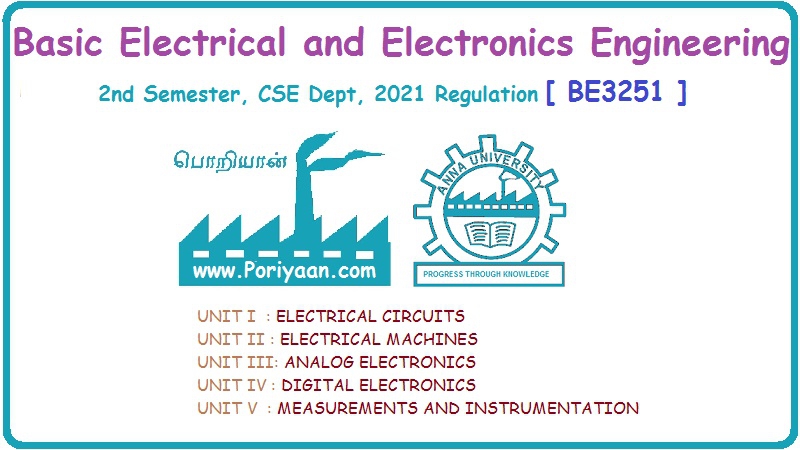Basic Electrical and Electronics Engineering: Unit IV: Digital Electronics
Conversion of Octal to any other radix system
with Solved Example Problems
Each digit of the octal number is individually converted to its binary equivalent to obtain conversion of the number.
CONVERSION
OF OCTAL TO ANY OTHER RADIX SYSTEM
Octal to Binary Conversion
Each
digit of the octal number is individually converted to its binary equivalent to
obtain conversion of the number.
Problem: 22
Convert the octal number (723)8
to binary number.
(723)8
= (111 001 011)2
Problem: 23
Convert the octal number (426.43)8
to binary number.
(426.43)8
= (100010110.100011)2
Octal to Hexadecimal Conversion
The
conversion of octal to hexadecimal number is given below
Step
(i) convert octal number to its binary
Step
(ii) convert that binary number to its hexadecimal equivalent.
Convert
octal number (623), to Hexadecimal number system.
Problem: 24
Step (i)
(623)8
= 110010011
Step (ii)
(110010011)2
= (193)16
Problem: 25
Convert octal number (564)8
to Hexadecimal number system.
Step (i)
Step (ii)
(564)8⇒ (1.74)16
Octal to Decimal Conversion
The
octal number system uses first eight digits of decimal number system (0-7).
The
conversion is obtained by multiplay the power of 8 with each digit.
Problem: 26
Convert the octal number (623)8
to decimal number system.
(623)8
⇒ 6 × 82 + 2
× 81 + 3 × 80
=
384 + 16 + 3
(623)8
= (403)10
Problem: 27
Convert the octal number (46.24)8
to decimal number system.
(46.24)8
⇒ 4 × 81 + 6
× 80 + 2 × 8-1 + 4 × 8−2
=
32 + 6 + 0.25 + 0.0625.
(46.24)8
= (38.3125)10
Problem: 28
Convert the octal number (127.6)8
to decimal number system.
(127.6)8 = 1 × 82 + 2 ×
81 + 7 × 80 + 6 × 8-1
=
64+ 16 + 7 + 0.75
(127.6)8
⇒ (87.75)10
Example
Problems
Problem: 29
Convert the following decimal
number to the indicated bases.
(a) 7562.45 to octal
(b) 1938.25 to hexadecimal
(c) 175.175 to binary
Solution:
(a) (7562.45)10 octal
Integer part
7562
⇒ 16612
Fractional part
0.45
× 8 = 3.6 = 3
0.6
× 8 = 4.8 = 4
0.8
× 8 = 6.4 = 6
0.4
× 8 = 3.2 = 3
0.2
× 8 = 1.6 = 1
(7562.45)10
= (16612.34631)8
(b) (1938.25)10 to
hexadecimal
Integer part:
(1938)10
⇒ (792)16
Fractional part:
0.25
× 16 = 4.0 = 4
(0.25)10
= (0.4)16
(1938.25)10
= (792.4)16
(c)
(175.175)10 to binary
Integer part
(175)10 ⇒ (10101111)2
Fraction part:
0.175
× 2 = 0.35 = 0
0.35
× 2 = 0.70 = 0
0.7
× 2 = 1.4 = 1
0.4
× 2 = 0.8 = 0
0.8
× 2 = 1.6 = 1
(0.175)10 = (0.00101)2 ↓
(175.175)10
= (10101111.00101)2
Problem: 30
Convert the following numbers from
the given base to the other three bases indicated.
(a) Decimal 225 to binary, octal
and hexadecimal.
(b) Binary 11010111 to decimal,
octal and hexadecimal.
Solution:
(a) Decimal (225)10
to binary
(225)10 ⇒ (11100001)2
Decimal (225)10
to octal:
(225)10
⇒ (341)8
Decimal (225)10
to hexadecimal
(225)10
⇒ (E1)16
(b) (11010111)2
to decimal
1
× 27 + 1 × 26 + 0 × 25 + 1 × 24 + 0
× 23 + 1 × 22 + 1 × 21 + 1 × 20
=
128 + 64 + 0 + 16 + 0 + 4 + 2 + 1
(11010111)2
⇒ (215)10.
(11010111)2
to octal
(11010111)2
→ (327)8
(11010111)2
to hexadecimal
(11010111)2 → (D7)16
Problem: 31
Convert the Hexadecimal number (A26)16 to decimal octal and binary.
Solution:
Hexadecimal
(A26)16 to decimal
=
A × 162 + 2 × 161 + 6 × 160
=
10 × 162 + 2 × 161 + 6 × 160
=
2560 + 32 + 6
=
2598
(A26)16
→ (2598)10
Hexadecimal
(A26)16 to octal
Step (i)
(A26)16
→ (101000100110)2
Step (ii)
(A26)16
→ (5046)8
Hexadecimal (A26)16
to binary
(A26)16
→ (101000100110)2
Problem: 32
Convert the octal number (421)8
to decimal, binary and hexadecimal.
Octal (421)8 to decimal
(421)8
=
4 × 82 + 2 × 81 + 1 × 80
=
256 + 16 + 1
(421)8
→ (273)10
Octal (421)8
to binary
(421)8
→ (100010001)2
Octal (421)8
to Hexadecimal
Step (i)
Step (ii)
(421)8
→ (111)16
Problem: 33
Convert (10111.11), binary to
decimal, octal and hexadecimal.
Solution:
(10111.11)2
to decimal
1
× 24 + 0 × 23 + 1 × 22 + 1 × 21 + 1
× 20 + 1 × 2-1 + 1 × 2-2
16
+ 0 + 4 + 2 + 1 + 0.5 + 0.25
(23.75)10
(10111.11)2
→ (23.75)10
(10111.11)2
to octal
(10111.11)2
→ (27.6)8
(10111.11)2
to hexadecimal
(10111.11)2 → (17. C)16
Problem: 34
Convert hexadecimal number (C22.A)16
to decimal, binary and octal.
Solution:
(C22.A)16 to
decimal
=
C × 162 +2 × 161 + 2 × 160 + A × 16-1
=
12 × 162 + 2 × 161 + 2 × 160 + 10 × 16-1
=
3072 + 32 + 2 + 0.625
(C22.A)16
→ (3106.625)10
(C22.A)16 to
binary
(C22.A)16
→ (110000100010.1010)2
(C22.A)16 to
Octal
(C22.A)16 → (6042.50)8
Basic Electrical and Electronics Engineering: Unit IV: Digital Electronics : Tag: : with Solved Example Problems - Conversion of Octal to any other radix system
Related Topics
Related Subjects
Basic Electrical and Electronics Engineering
BE3251 2nd semester Mechanical Dept | 2021 Regulation | 2nd Semester Mechanical Dept 2021 Regulation
Basic Electrical and Electronics Engineering
BE3251 2nd Semester CSE Dept 2021 | Regulation | 2nd Semester CSE Dept 2021 Regulation

